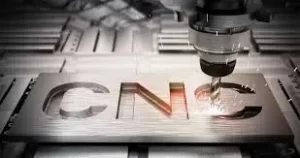Die casting is a versatile and efficient manufacturing process that has revolutionized the production of metal parts. By injecting molten metal under high pressure into a steel mold or die, die casting creates precise, durable, and complex components with minimal waste. This process is widely used across various industries, thanks to its ability to produce high-quality, cost-effective components at scale.
In this blog, we’ll explore the significance of die casting and how it supports innovation and efficiency in various industries.
1. Automotive Industry
The automotive industry is one of the largest consumers of die-cast components. Die casting plays a critical role in manufacturing lightweight yet durable parts that improve fuel efficiency and vehicle performance. Common applications include:
- Engine blocks
- Transmission housings
- Wheel hubs
- Steering components
By utilizing materials such as aluminum and magnesium alloys, die casting helps reduce vehicle weight while maintaining strength and durability.
2. Electronics Industry
In the electronics sector, die casting is essential for producing parts with excellent thermal conductivity and electromagnetic shielding properties. Common applications include:
- Enclosures for electronic devices
- Heat sinks for cooling systems
- Chassis for laptops and mobile phones
These components not only protect delicate electronic systems but also ensure their efficient performance in compact and intricate designs.
3. Aerospace Industry
Precision and reliability are paramount in the aerospace industry, making die casting an ideal solution. Lightweight, high-strength components are essential to ensure fuel efficiency and safety in aircraft. Die-cast parts used in this sector include:
- Turbine blades
- Structural components
- Avionics housings
Die casting enables manufacturers to meet the stringent quality standards required for aerospace applications.
4. Consumer Goods Industry
Die casting is also widely used in the production of durable and aesthetically pleasing consumer goods. It allows for the creation of intricate designs and smooth finishes for products like:
- Kitchen appliances
- Power tools
- Lighting fixtures
- Sporting equipment
The ability to mass-produce detailed parts efficiently makes die casting a go-to solution for consumer goods manufacturers.
5. Industrial Machinery
Industrial machinery relies on robust and precise components to ensure smooth operation under demanding conditions. Die-cast parts commonly used in this sector include:
- Gearboxes
- Pumps
- Covers and housings
The durability and dimensional accuracy provided by die casting help improve the performance and longevity of machinery.
6. Medical Industry
In the medical field, die casting is used to produce lightweight and precise components for devices and equipment. Examples include:
- MRI machine parts
- Surgical instruments
- Implantable devices
The high accuracy and smooth surface finish of die-cast parts ensure their suitability for critical medical applications.
Advantages of Die Casting Across Industries
The widespread use of die casting can be attributed to its many advantages:
- Precision and accuracy: Die casting allows for the production of highly detailed and intricate designs.
- Cost-effectiveness: Once the die is created, mass production becomes economical.
- Durability: Die-cast parts are strong, heat-resistant, and corrosion-resistant.
- Reduced waste: The process minimizes material wastage compared to other manufacturing methods.
- Versatility: Suitable for various alloys such as aluminum, zinc, and magnesium.
Conclusion
Die casting is a cornerstone of modern manufacturing, playing a vital role in industries ranging from automotive and electronics to aerospace and medical. Its ability to deliver high-quality, lightweight, and durable components efficiently makes it an invaluable process in today’s industrial landscape.
As industries continue to demand innovation and sustainability, die casting will undoubtedly remain a key player in shaping the future of manufacturing.




